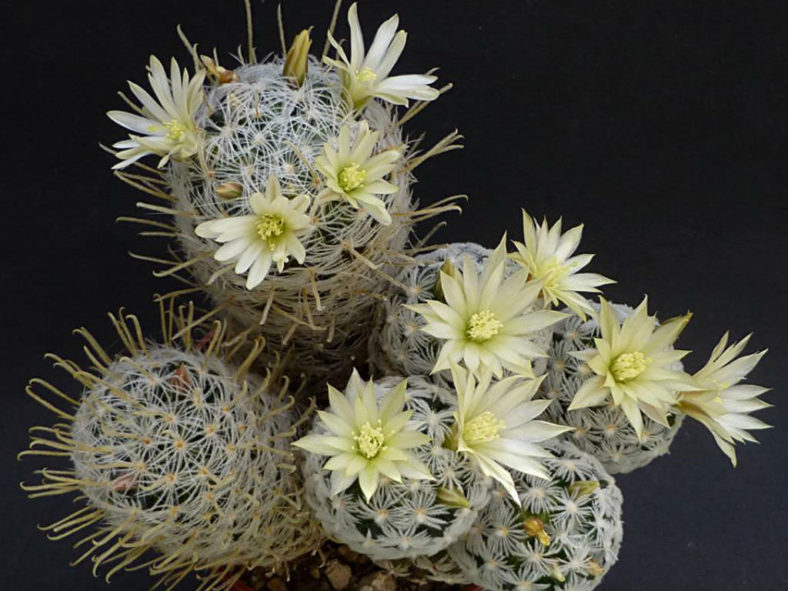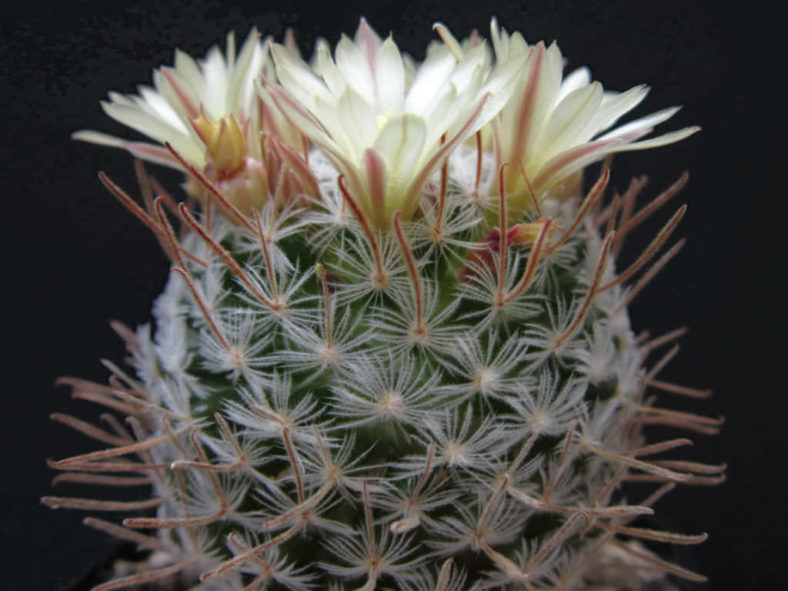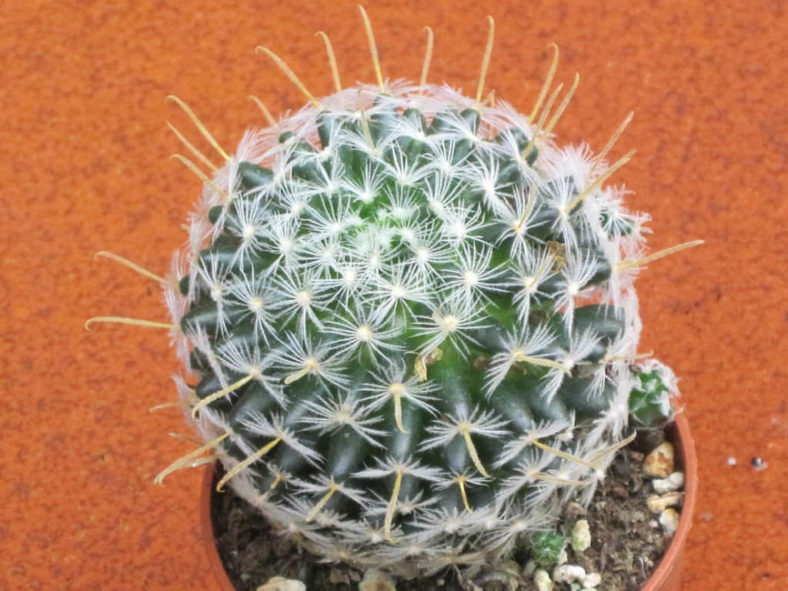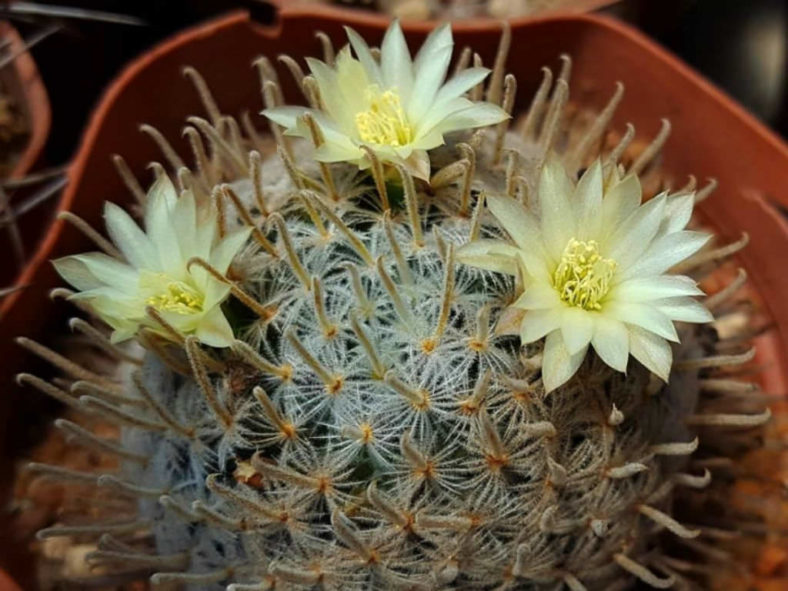Scientific Name
Mammillaria duwei Rogoz. & P.J.Braun
Synonym(s)
Mammillaria crinita subsp. duwei, Mammillaria nana subsp. duwei, Mammillaria trichacantha subsp. duwei
Scientific Classification
Family: Cactaceae
Subfamily: Cactoideae
Tribe: Cacteae
Subtribe: Cactinae
Genus: Mammillaria
Description
Mammillaria duwei is a small, slow-growing cactus with dark green, globose to short cylindrical stems covered with tubercles tipped with clusters of spines. The stems can grow solitary or in clumps, reaching up to 1.6 inches (4 cm) in height and 2.4 inches (6 cm) in diameter. Each areole bears 0 to 2 central and 28 to 36 radial spines. The radial spines are thin, white, brownish at the base, interlacing, and closely appressed to the stem, measuring up to 0.15 inches (0.4 cm) long. The central spines are yellowish and hooked, measuring up to 0.8 inches (2 cm) long.
The flowers are funnel-shaped, yellowish or cream to light yellow, and can reach up to 0.8 inches (2 cm) in diameter. They appear in spring, forming a ring near the top of the stem. The fruits are red, club-shaped, and contain tiny blackish seeds.

Hardiness
USDA hardiness zones 9b to 11b: from 25 °F (−3.9 °C) to 50 °F (+10 °C).
How to Grow and Care
To encourage better flowering, allow the plants to enjoy a cooling period in the winter and suspend watering. Unlike many other cacti, which use their ribs as storage devices, Mammillaria feature raised tubercles, from which spines emerge. When you water, the tubercles will expand to increase water storage. The flowers emerge from the axils of these tubercles on the previous year's growth, which accounts for their interesting halo effect. The cactus mustn't be exposed to prolonged dampness and sitting water. Never let your cactus sit in a dish of water. Lastly, fertilize during the growing season for the best results.
Repot as needed, preferably during the warm season. To repot Mammillaria, ensure the soil is dry before repotting, then gently remove the pot. Knock away the old soil from the roots, removing any rotted or dead roots. Treat any cuts with a fungicide. Place the plant in its new pot and backfill it with potting soil, spreading the roots as you repot. Leave the plant dry for a week or so, then begin to water lightly to reduce the risk of root rot.
See more at How to Grow and Care for Mammillaria.
Origin
Mammillaria duwei is endemic to Mexico. It occurs only at one location northeast of the city of Guanajuato.
Links
- Back to genus Mammillaria
- Succupedia: Browse succulents by Scientific Name, Common Name, Genus, Family, USDA Hardiness Zone, Origin, or cacti by Genus
Photo Gallery
Click on a photo to see a larger version.


